092000 - Gypsum Board / Interior Framing
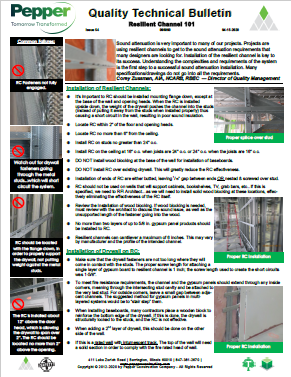
Resilient Channel 101 - Issue 54
- Corey S Zussman, AIA
- Link
Sound attenuation is very important to many of our projects. Projects are using resilient channels to get to the sound attenuation requirements that many designers are looking for. Installation of the resilient channel is key to its success. Understanding the complexities and requirements of the system is the first step to a successful sound attenuation installation. Many specifications/drawings do not go into all the requirements.
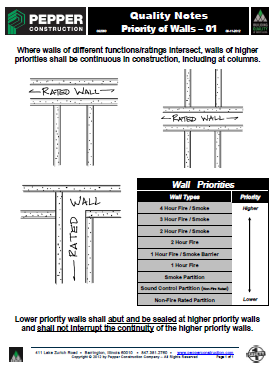
Priority of Walls 01 - QN
- Corey S Zussman, AIA
- Link
Where walls of different functions/ratings intersect, walls of higher priorities shall be continuous in construction, including at columns. Lower priority walls shall abut and be sealed at higher priority walls and shall not interrupt the continuity of the higher priority walls.
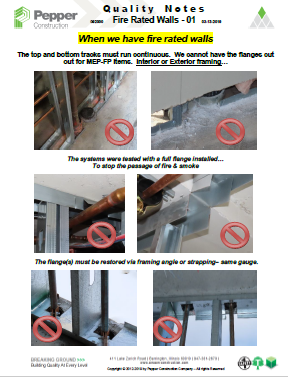
Fire Rated Walls 01 - QN
- Corey S Zussman, AIA
- Link
When we have fire rated walls, the top and bottom tracks must run continuous. We cannot have the flanges cut out for MEP-FP items, interior or exterior framing.
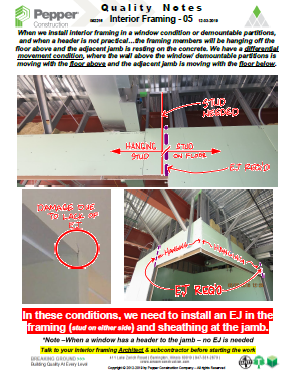
Non Structural Framing 05 Differential Movement - QN
- Corey S Zussman, AIA
- Link
When we install interior framing in a window condition or demountable partitions, and when a header is not practical, the framing members will be hanging off the floor above and the adjacent jamb is resting on the concrete. We have a differential movement condition, where the wall above the window/demountable partitions is moving with the floor above and the adjacent jamb is moving with the floor below.
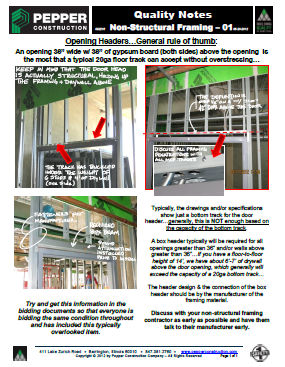
Non Structural Framing 01 Opening Headers - QN
- Corey S Zussman, AIA
- Link
Opening headers general rule of thumb is that an opening 36” wide with 36” of gypsum board (both sides) above the opening is the most that a typical 20ga floor track can accept without overstressing.
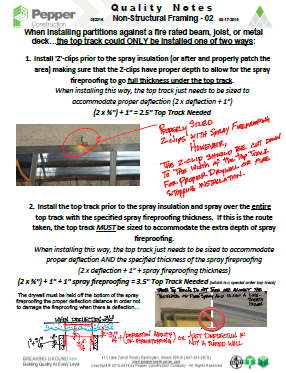
Non Structural Framing 02 Top Track - QN
- Corey S Zussman, AIA
- Link
When installing partitions against a fire-rated beam, joist, or metal deck, the top track could ONLY be installed one of two ways: Z-clips prior to spray insulation but with proper depth to allow for spray fireproofing or spray over the entire top track with appropriate spray fireproofing thickness.
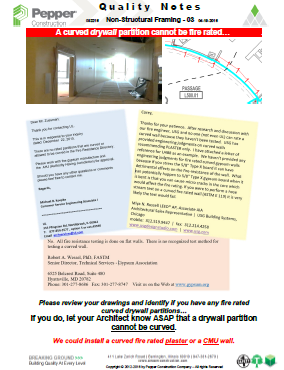
Non Structural Framing 03 FR Curved Walls - QN
- Corey S Zussman, AIA
- Link
Please review your drawings and identify if you have any fire-rated curved drywall partitions. If you do, let your Architect know ASAP that a drywall partition cannot be curved, however, a curved fire-rated plaster could be installed.
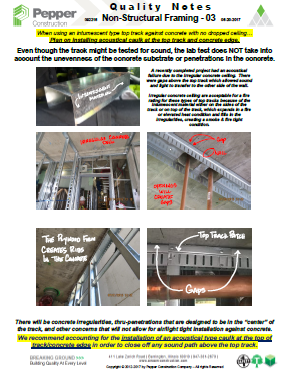
Non-Structural Framing 04 Acoustical Caulk - QN
- Corey S Zussman, AIA
- Link
When using an intumescent type top track against concrete with no dropped ceiling, plan on installing acoustical caulk at the top track and concrete edge. Even though the track might be tested for sound, the lab test does NOT take into account the unevenness of the concrete substrate or penetrations in the concrete.

Gypsum Control Joints - Issue 23
- Corey S Zussman, AIA
- Link
All buildings are subject to a wide range of forces that affect structure. Some forces are obvious and easily identified, such as tornadoes and seismic events and create distress to building partitions and ceilings. Other forces are more subtle, but over time, they may be just as damaging to the interior. Variations in temperature, moisture/humidity, and wind can exert a significant force on a building’s structural integrity, leading to cracking and other symptoms of distress in partitions and ceilings. It is Important to review the construction documents for locations of partitions and ceilings control joints as soon as possible in order to correctly plan for the installation of the control joints at the beginning of construction.
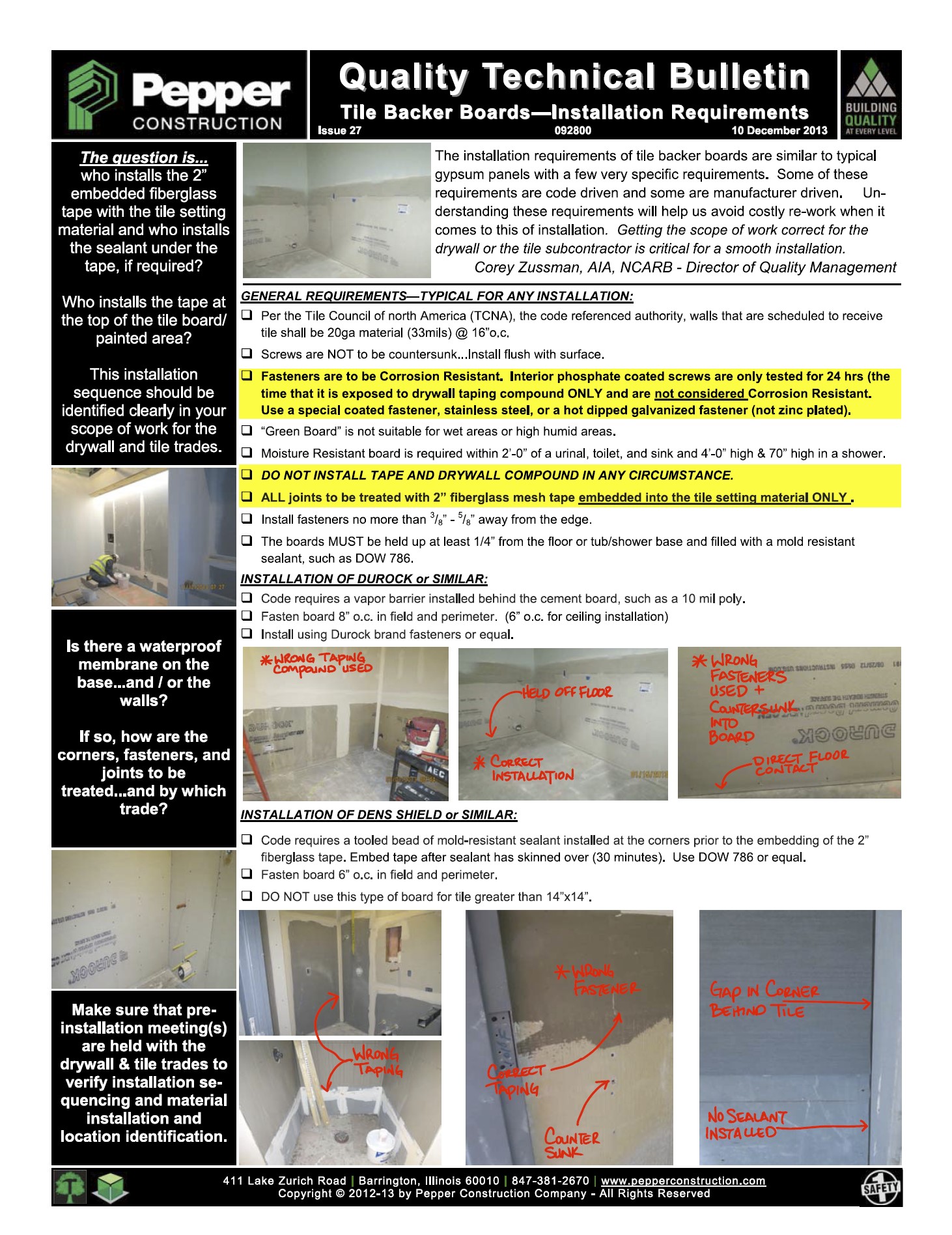
Tile Backer Boards - Issue 27
- Corey S Zussman, AIA
- Link
The installation requirements of tile backer boards are similar to typical gypsum panels with a few very specific requirements. Some of these requirements are code driven and some are manufacturer driven. Understanding these requirements will help us avoid costly re-work when it comes to this of installation. Getting the scope of work correct for the drywall or the tile subcontractor is critical for a smooth installation.

Sound Attenuation and Insulation-Issue 48
- Corey S Zussman, AIA
- Link
When installing cold-formed metal framing on the exterior of the building or light-gauge framing on the interior, we often are required to install batt insulation or sound attenuation blankets. Sound issues and cold pockets are becoming a major legal issue with contractors today. We need to pay special attention to the areas where we will not be able to access after the installation of these framing members, such as the interior of the double studs, header box-es or at door frames. We just need to plan ahead and identify these areas with the appropriate subcontractor as soon as possible.
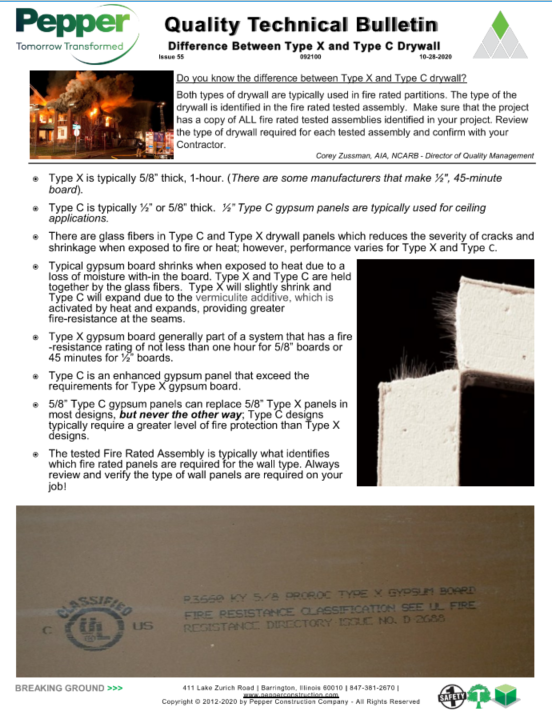
Difference Between Type X vs Type C Drywall - Issue 55
- Corey S Zussman, AIA
- Link
Do you know the difference between Type X and Type C drywall? Both types of drywall are typically used in fire rated partitions. The type of drywall is identified in the fire rated tested assembly. Make sure that the project has a copy of ALL fire rated tested assemblies identified in your project. Review the type of drywall required for each tested assembly and confirm with your contractor.
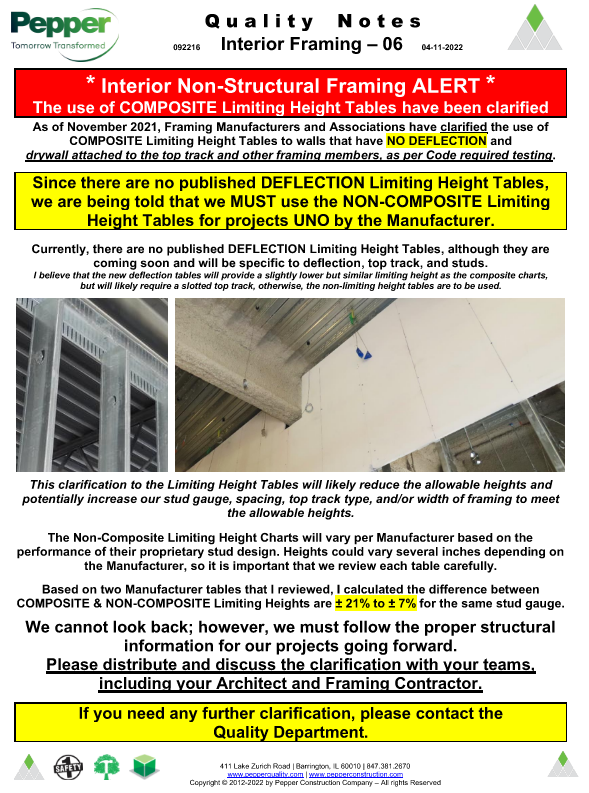
Non Structural Framing 06 Limiting Heights - QN
- Corey S Zussman, AIA
- Link
As of November 2021, Framing Manufacturers and Associations have clarified the use of COMPOSITE Limiting Height Tables to walls that have NO DEFLECTION and drywall attached to the top track and other framing members, as per Code required testing. The Non-Composite Limiting Height Charts will vary per Manufacturer based on the performance of their proprietary stud design. Heights could vary several inches depending on the Manufacturer, so it is important that we review each table carefully.
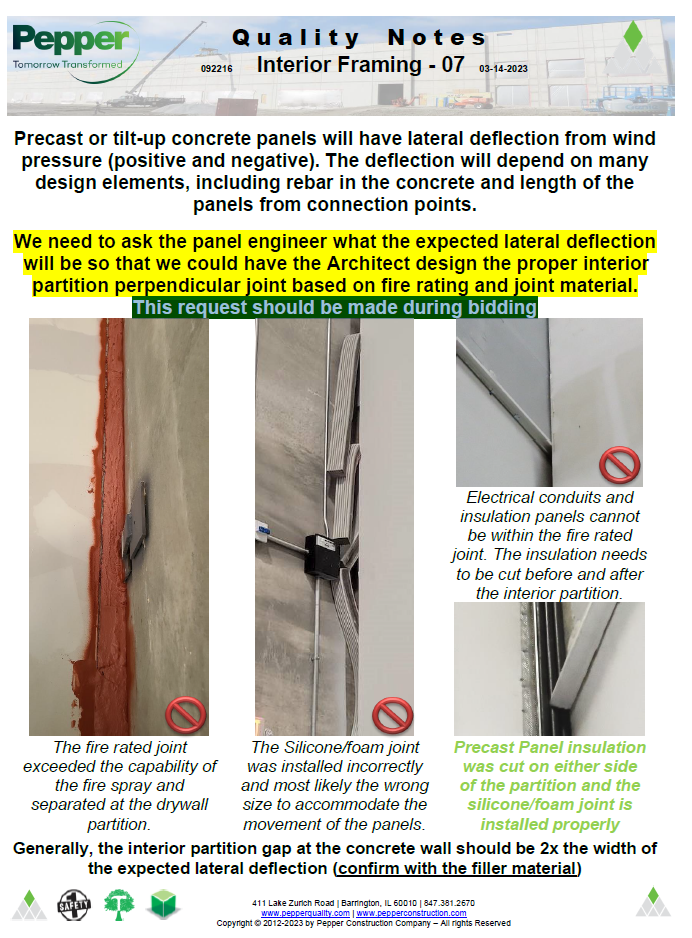
Non Structural Framing 07 at Precast - QN
- Corey S Zussman, AIA
- Link
Precast or tilt-up concrete panels will have lateral deflection from wind pressure (positive and negative). The deflection will depend on many design elements, including rebar in the concrete and length of the panels from connection points. We need to ask the panel engineer what the expected lateral deflection will be so that we could have the Architect design the proper interior partition perpendicular joint based on fire rating and joint material. This request should be made during bidding.
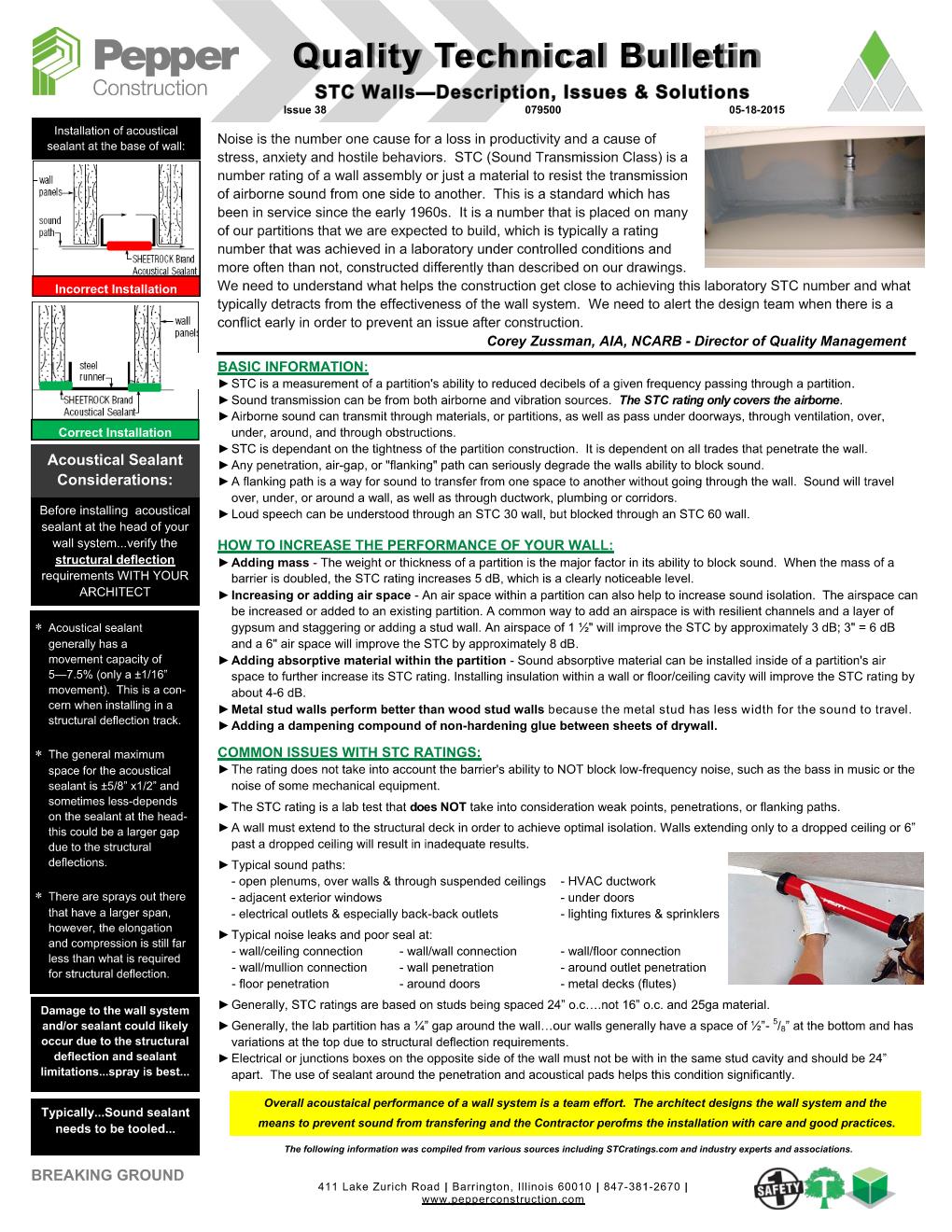
STC Walls Acoustical Sealant - Issue 38
- Corey S Zussman, AIA
- Link
Noise is the number one cause for a loss in productivity and a cause of stress, anxiety and hostile behaviors. STC (Sound Transmission Class) is a number rating of a wall assembly or just a material to resist the transmission of airborne sound from one side to another. This is a standard which has been in service since the early 1960s. It is a number that is placed on many of the partitions that we are expected to build, which is typically a rating number that was achieved in a laboratory under controlled conditions and more often than not, constructed differently than described on our drawings. We need to understand what helps the construction get close to achieving this laboratory STC number and what typically detracts from the effectiveness of the wall system. We need to alert the design team when there is a conflict early in order to prevent an issue after construction.
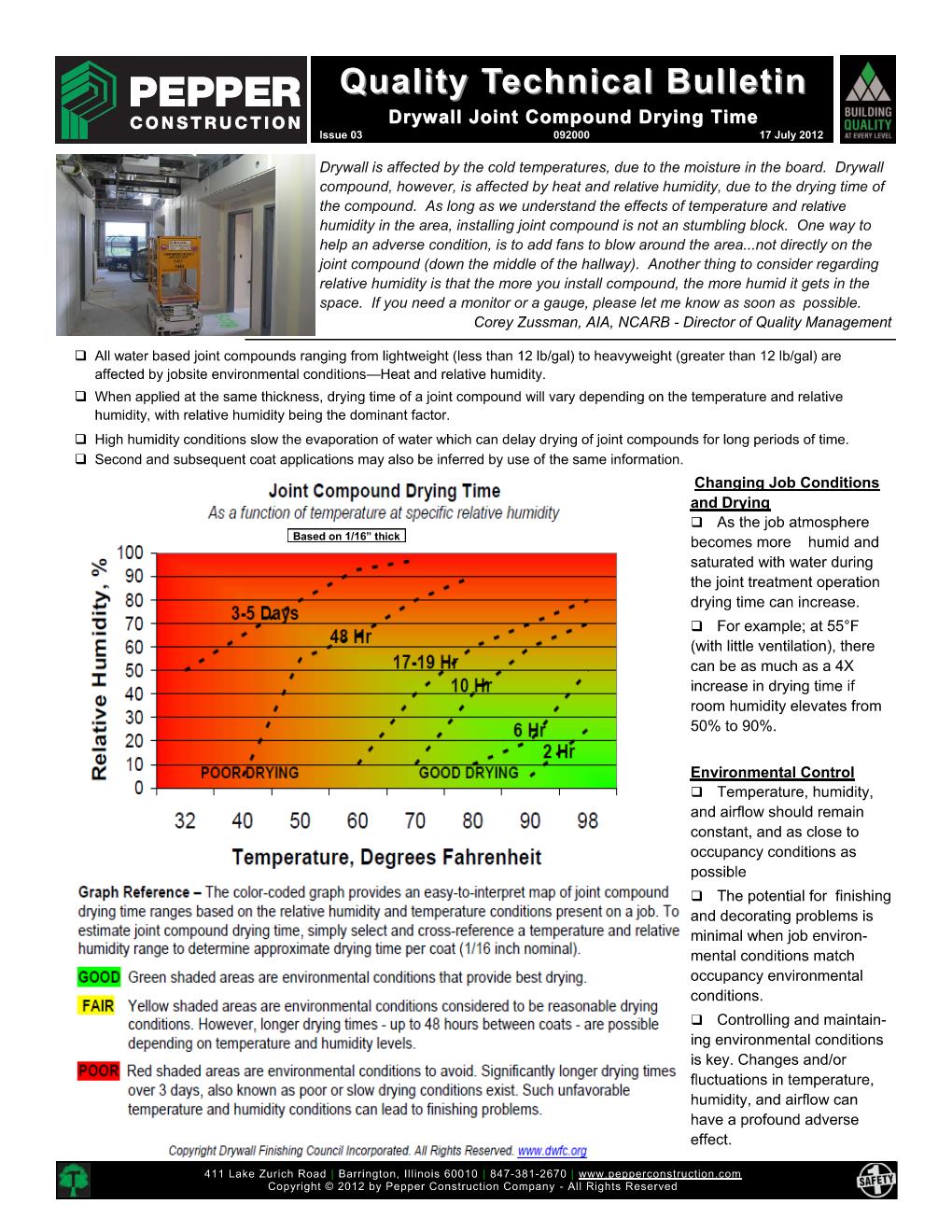
Drywall Joint Compound Drying Time - Issue 03
- Corey S Zussman, AIA
- Link
Drywall is affected by the cold temperatures, due to the moisture in the board. Drywall compound, however, is affected by heat and relative humidity, due to the drying time of the compound. As long as we understand the effects of temperature and relative humidity in the area, installing joint compound is not an stumbling block. One way to help an adverse condition, is to add fans to blow around the area...not directly on the joint compound (down the middle of the hallway). Another thing to consider regarding relative humidity is that the more you install compound, the more humid it gets in the space. If you need a monitor or a gauge, please let me know as soon as possible.
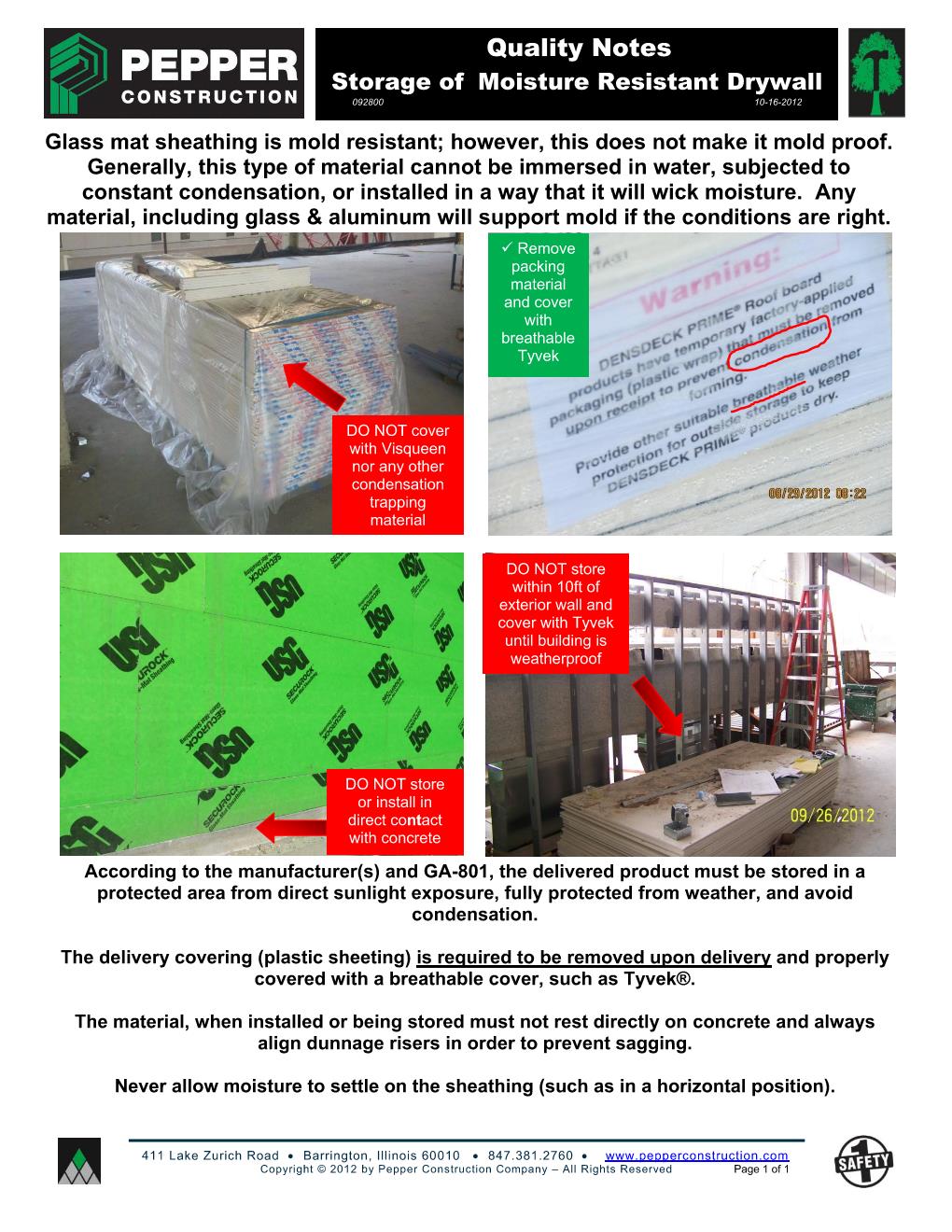
Drywall Storage QN
- Corey S Zussman, AIA
- Link
Glass mat sheathing is mold resistant; however, this does not make it mold proof. Generally, this type of material cannot be immersed in water, subjected to constant condensation, or installed in a way that it will wick moisture. Any material, including glass & aluminum will support mold if the conditions are right.
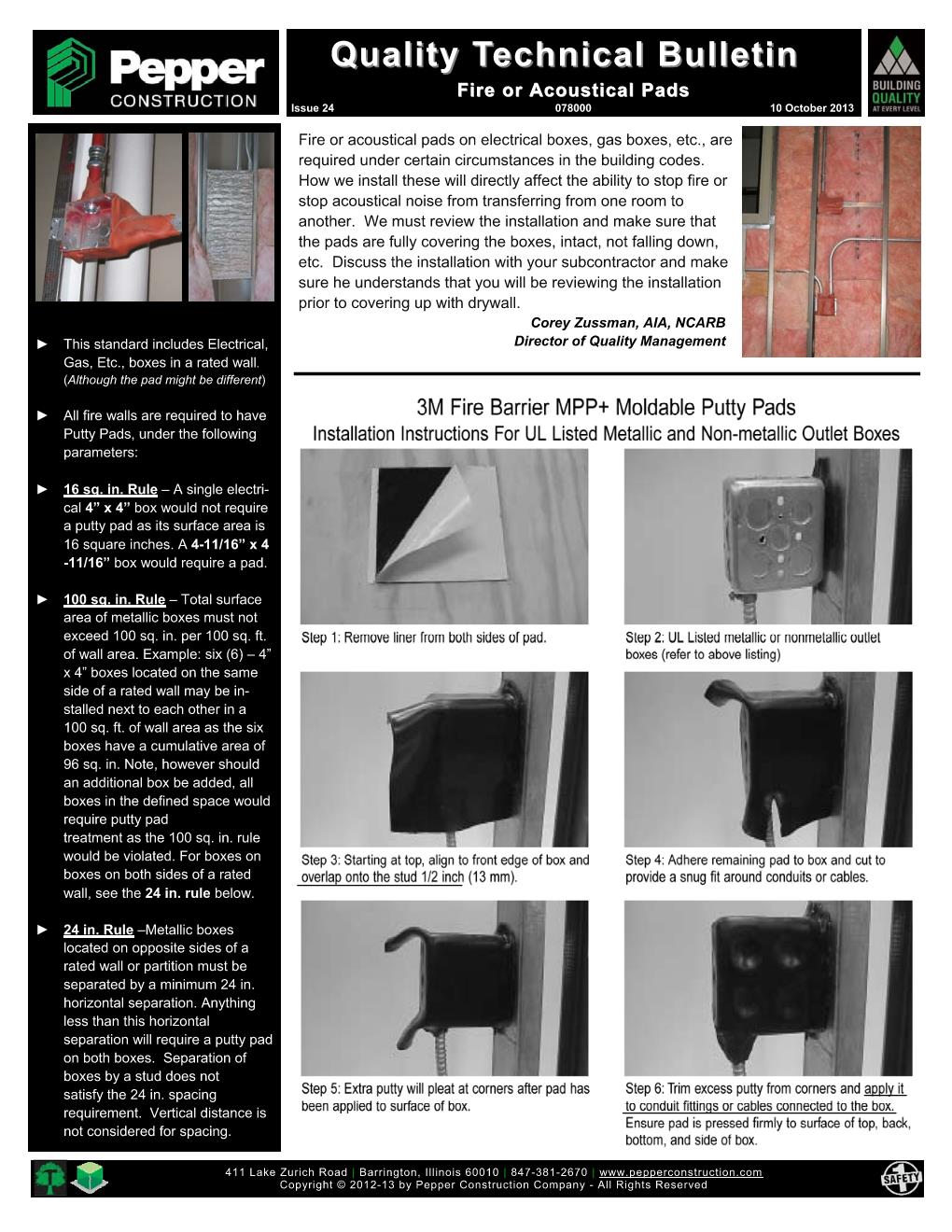
Fire and Acoustical Pads Issue 24
- Corey S Zussman, AIA
- Link
Fire or acoustical pads on electrical boxes, gas boxes, etc., are required under certain circumstances in the building codes. How we install these will directly affect the ability to stop fire or stop acoustical noise from transferring from one room to another. We must review the installation and make sure that the pads are fully covering the boxes, intact, not falling down, etc. Discuss the installation with your subcontractor and make sure he understands that you will be reviewing the installation prior to covering up with drywall.
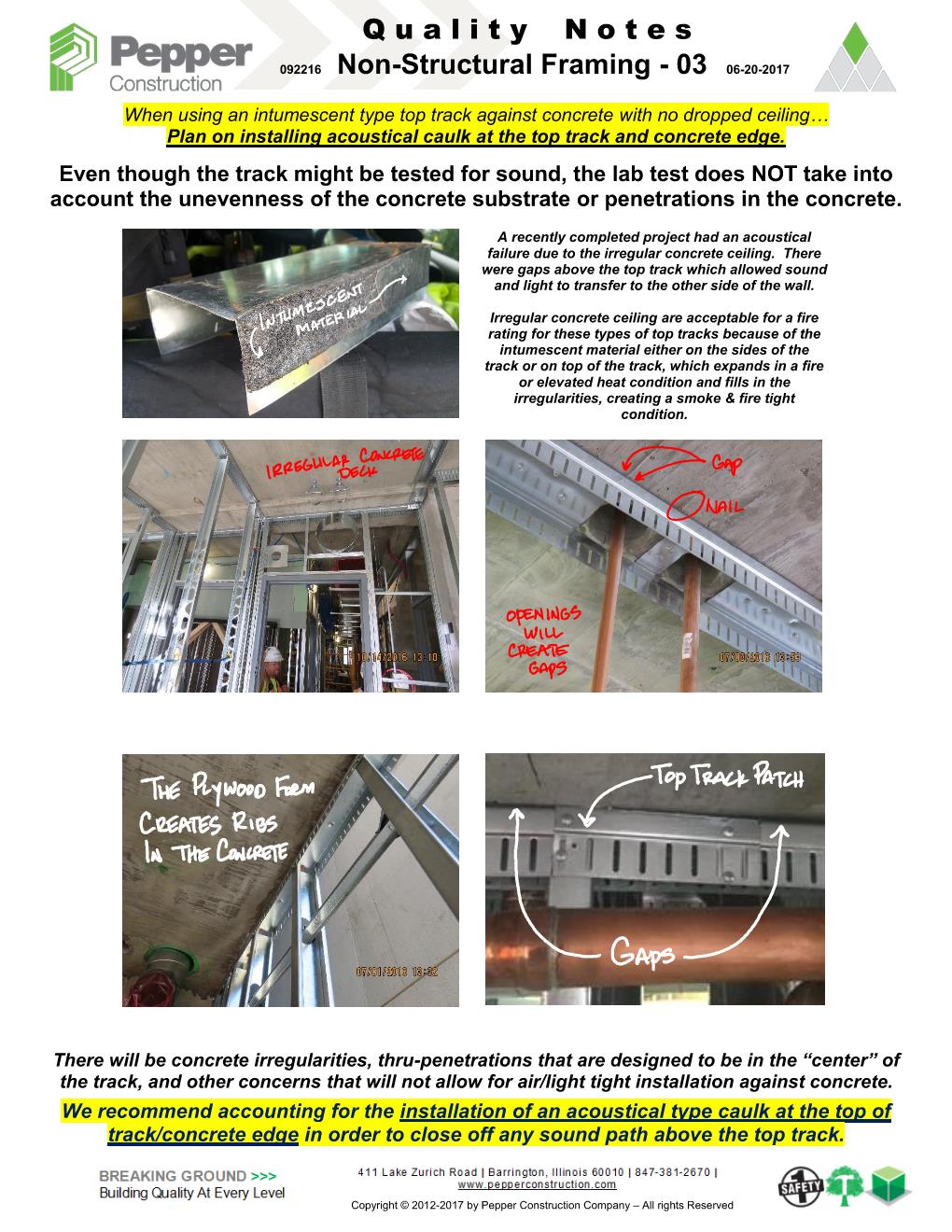
Head of Wall - Intumescent and Concrete Deck QN
- Corey S Zussman, AIA
- Link
When using an intumescent type top track against concrete with no dropped ceiling…Plan on installing acoustical caulk at the top track and concrete edge. Even though the track might be tested for sound, the lab test does NOT take into account the unevenness of the concrete substrate or penetrations in the concrete.
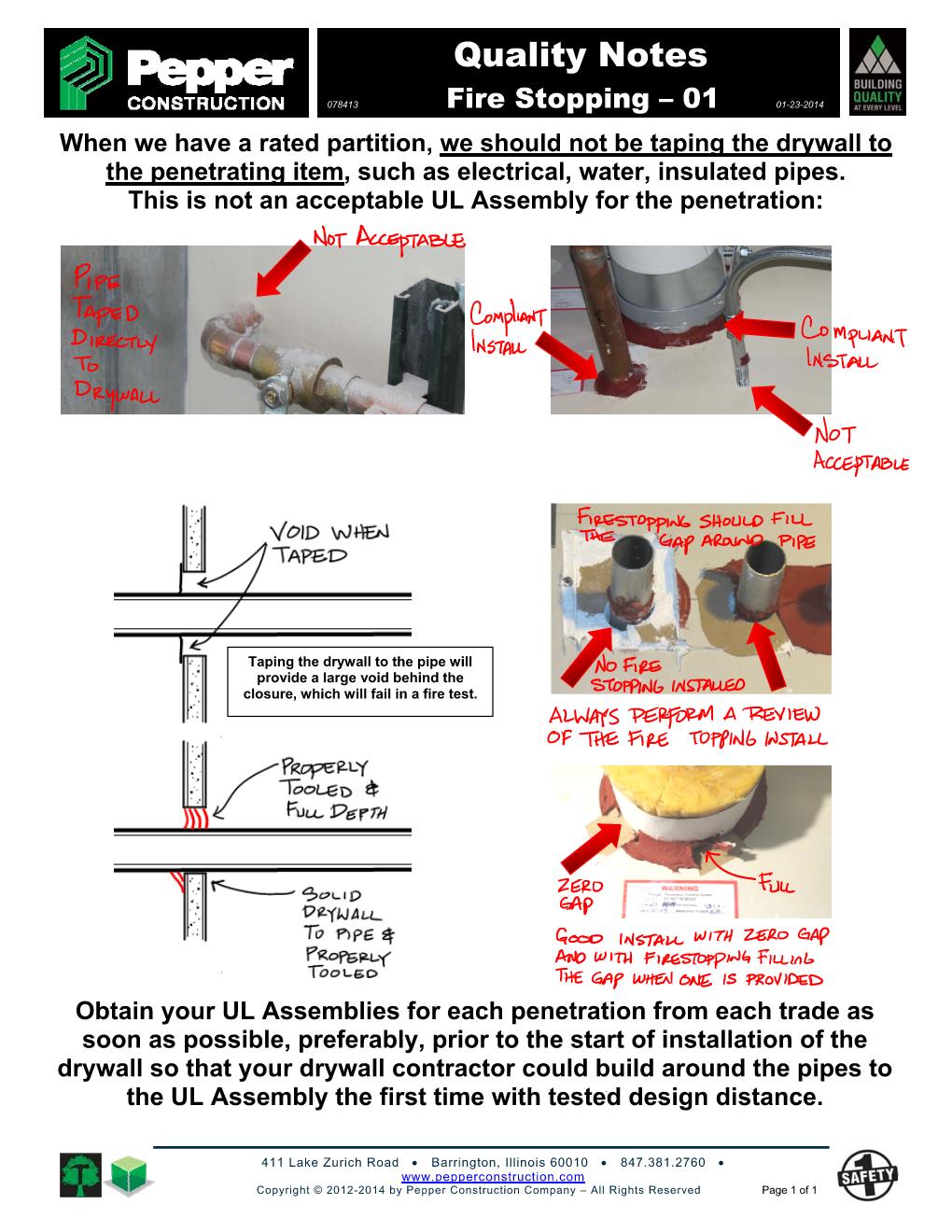
Drywall taping penetrations Pat Fire Walls QN
- Corey S Zussman, AIA
- Link
When we have a rated partition, we should not be taping the drywall to the penetrating item, such as electrical, water, insulated pipes. This is not an acceptable UL Assembly for the penetration.
